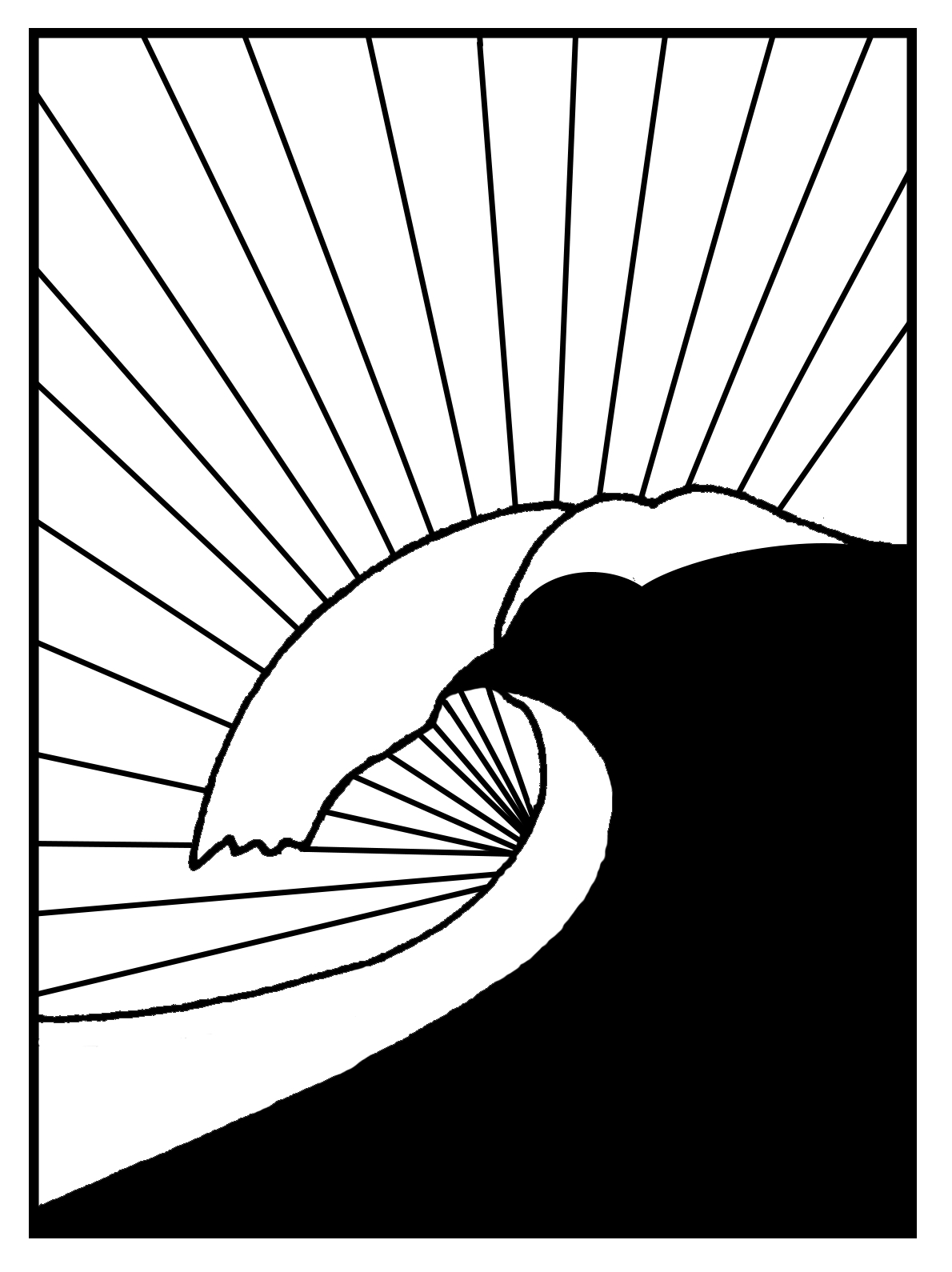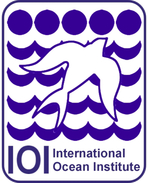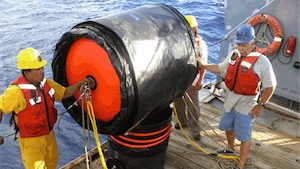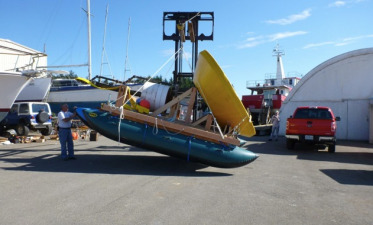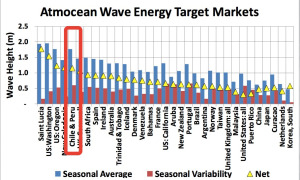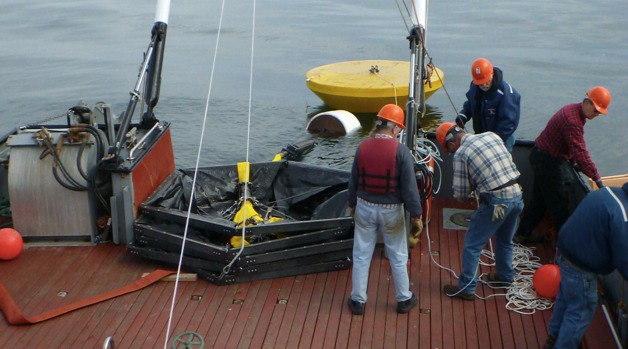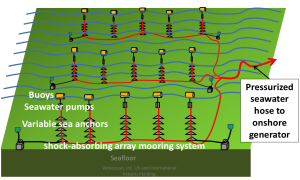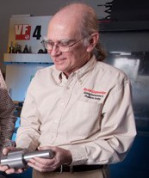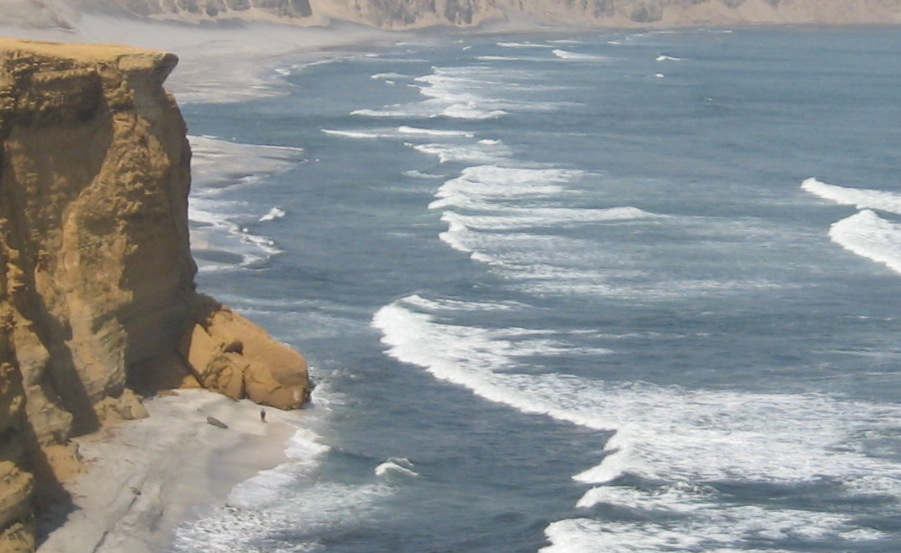We believe Atmocean to have numerous advantages within the wave energy sector. Like a blade of grass in the wind, Atmocean’s wave energy array has been designed to move within a very complex and punishing ocean environment. Unlike most current technologies, our array, instead of being directly connected to the seafloor, is instead anchored at opposite ends. This reduces our impact and footprint on the seafloor, keeps costs down which allows Atmocean to remain competitive with conventional fuels, and makes operations and maintenance far easier.
Additionally, due to our modular approach, our system can be shipped in standard shipping containers. This allowing for production at an industrial scale, reducing on site operations and gains Atmocean the economy of scale. Furthermore, this allows for a quick roll-out of our system. Imagine in the wake of a natural disaster, being able to show up to a devastated coastal community with 6 shipping containers and be able to produce power and/or fresh water daily, within just a few short days of arriving!
These are just some of our advantages within the wave energy sector. However, members of the entire wave energy industry maintain overall advantages to conventional fuel sources. In our previous effort to crowd fund Atmocean wave energy for the deployment of our Peruvian pilot demonstration system, we wanted to make some short videos for the public audience in which we highlighted advantages of our technology in a fun and simple manner. Below, you will find 9 short clips, each discussing an advantage of Atmocean’s wave energy technology as short thought-provoking ideas. Enjoy!
There is an estimated potential of 3.7 terawatts of global wave energy, almost double that of current world electrical consumption. With Atmocean’s technology, we have the potential to tap into this resource and unlock this clean renewable energy source, allowing us to divest from current fossil fuels we heavily rely on.
At 6 cents per kilowatt-hour, Atmocean is competitive in price to all current energy sources, no subsidies needed, period!
With our global challenges extending beyond clean energy production, why stop there when we can also filter the ocean of plastic. Since our technology operates by using waves to pump seawater to shore, where it goes through a simple Pelton water wheel to generate electricity, we additionally have the opportunity to filter the seawater as it goes back to sea of micro plastics. This is a new concept, secondary to power generation and desalination, but we are excited by the prospect of returning the resource cleaner than when we found it. Did you happen to catch the newspaper he was reading?
With roughly 60% of the world population living within 100 miles of a coastline, wave energy benefits from a local demand for power generation. As Atmocean operates at a minimum wave height of 1 meter, it allows for deployment in most coastal communities throughout the world.
With simplicity in design, using readily accessible materials, our system can be manufactured locally, globally!
With Atmocean’s 1st array, not only do we start to generate clean energy, we stand to revolutionize the world energy market by launching a new energy source!
Although tidal energy makes progress, there is yet to be a successful wave energy project realized throughout the world (Sept. 2014)! Carnegie has since come online Feb. 17th, 2015. Atmocean is set to join with our pilot demonstration system in 2015.
Atmocean’s 1st fully functional Peruvian system will act two-fold by generating clean energy, while also competing directly with fossil fuels sourced from the Peruvian Amazon basin.
Since 2005, we’ve conducted 59 days of ocean testing in Texas, Bermuda, Hawaii, California, and Oregon; three years of analysis by Sandia National Laboratories; six days of wave tank testing at Plymouth University (UK) state-of-the-art wave tank; all of which has allowed us to develop the technology and generate the blue prints ready to go into production. With the models, pilot studies, and tests done, all that is left is manufacturing of the array and deployment


